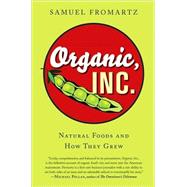
Note: Supplemental materials are not guaranteed with Rental or Used book purchases.
Purchase Benefits
What is included with this book?
| Introduction | p. ix |
| Humus Worshippers The Origins of Organic shy;Food | p. 1 |
| The Organic Method Strawberries in Two shy;Versions | p. 32 |
| A Local Initiative From Farm to shy;Market | p. 69 |
| A Spring Mix Growing Organic shy;Salad | p. 108 |
| Mythic Manufacturing Health, Spirituality, and shy;Breakfast | p. 145 |
| Backlash The Meaning of Organic | |
| Consuming Organic Why We shy;Buyp237 | |
| Acknowledgments | p. 257 |
| Notes | p. 261 |
| Table of Contents provided by Publisher. All Rights Reserved. |
The New copy of this book will include any supplemental materials advertised. Please check the title of the book to determine if it should include any access cards, study guides, lab manuals, CDs, etc.
The Used, Rental and eBook copies of this book are not guaranteed to include any supplemental materials. Typically, only the book itself is included. This is true even if the title states it includes any access cards, study guides, lab manuals, CDs, etc.
Excerpted from Organic, Inc: Natural Foods and How They Grew by Samuel Fromartz
All rights reserved by the original copyright owners. Excerpts are provided for display purposes only and may not be reproduced, reprinted or distributed without the written permission of the publisher.